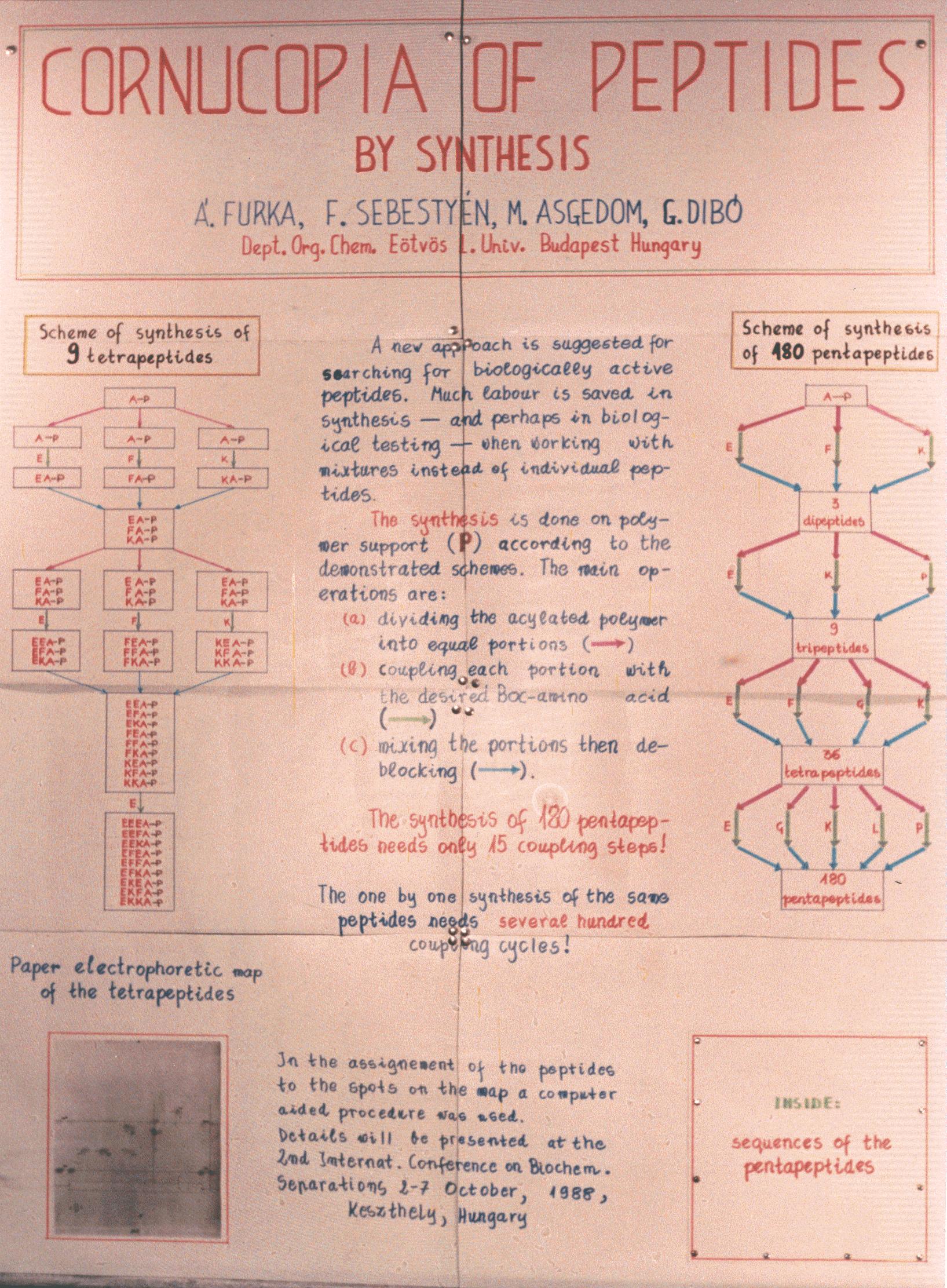
Furka, Á., Sebestyén, F., Asgedom, M., Dibó,
G. CORNUCOPIA OF PEPTIDES BY SYNTHESIS (1988) . In Highlights of Modern
Biochemistry, Proceedings of the 14th International Congress of Biochemistry,
Vol. 5, p. 47, VSP.Utrecht.
ABSTRACT:
The total number of possible peptides grows rapidly with the number
of constituent amino acid residues. There are, for example, 400 di-, 8000
tri-, 160000 tetra- and 3200000 different pentapeptides. A considerable
number of these can be supposed to be biologically active. In spite the
methodological progress, the synthesis and testing of many thousands of
peptides one by one is still a hopeless job. Exploiting the possibilities
inherent in the Merrifield-method, dramatic improvement can be achieved
in the efficiency of synthesis, if we accept peptide mixtures instead of
individual peptides. The principle of the method can be illustrated by
brief description of the synthesis of a mixture 9 tetrapaptides: a sample
of aminoacyl (Ala) resin is divided into 3 equal parts. One part is coupled
with Glu, the other with Lys and the last one with Phe. The resultant samples
are then thoroughly mixed and again divided into 3 parts. These are coupled
with Glu, Lys and Phe, respectively. Finally the samples are mixed, then
coupled with Glu. After processing the following peptides are present in
the mixture: GluGluGluAla, GluGluPheAla, GluGluLysAla, GluPheGluAla, GluPhePheAla,
GluPheLysAla, GluLysGluAla, GluLysPheAla, GluLysLysAla.
Our experiments show that a mixture containing as many as 180 pentapeptides
could easily be synthesized in a single run. No biological tests on the
mixtures were performed so far. partners are welcomed for cooperation.
Back to main page